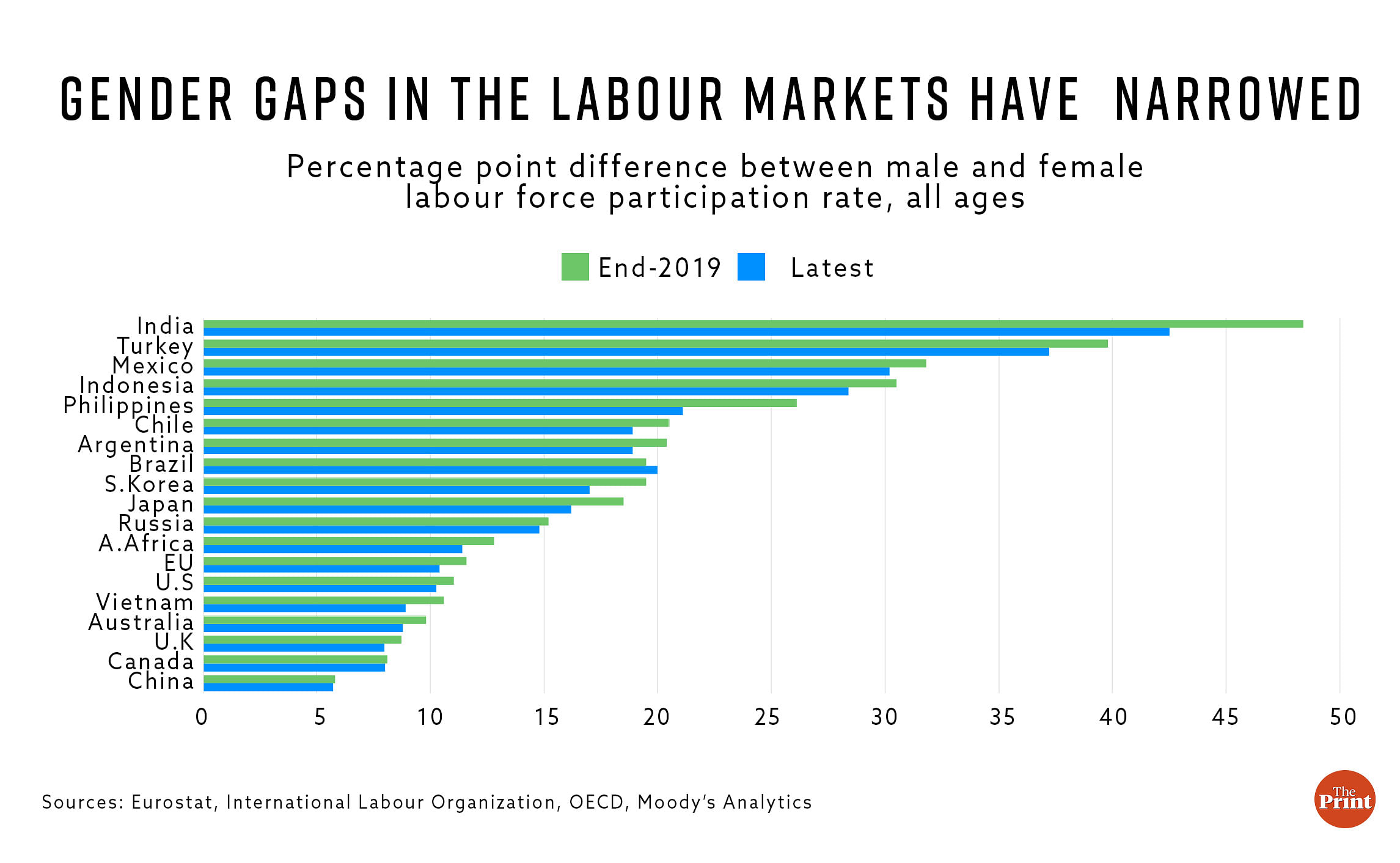New Delhi: A new global study shows even though India’s gender employment gap — along with that of the Philippines — has shown the most decline post-pandemic, it’s still four times that of the US or the European Union.
The study, conducted by research and analytics firm Moody’s Analytics on ‘Narrowing the Gender Participation Gap’ and released Wednesday, found that the gender labour force participation gaps are narrowing across the world as more women join or rejoin it. This has added $1.5 trillion to global income since 2019, it said.
The study identifies labour force participation rate as the proportion of the working-age population (age 20 to 64) that is either employed or actively seeking employment. The gender employment gap, therefore, is a relative disparity in the employment of people of different genders.
“Of this ($1.5 trillion), nearly half can be attributed to India and Japan, two large economies where gender gaps remain wide,” it said.
It adds that the income generated from new entrants into the labour market benefits not only the individuals who are compensated for their work, but also the firms that can increase production, the governments that receive more in income tax revenue and may also pay less in income support, and the world economy overall through the second-round effects on demand.
“This is a global phenomenon, with female participation rates rebounding more than male participation across all major economies since the pandemic,” the study said, attributing the phenomenon to the very tight labour markets, the broad-based increase in living costs due to the surge in inflation during the past two years, and working conditions that have become more flexible because of the shift towards remote working.
Additionally, the post-pandemic surge in female labour force participation was not mirrored by a comparable increase in the male participation rate, resulting in a further narrowing of the gender participation gap and supporting the fight against gender inequality.

Also Read: What reports on Indian women’s falling participation in labour force don’t tell you
Easing of inflation, remote work mandate — what could cause ‘potential backslide’
According to the report, while the largest post-pandemic declines in the gender gap have been observed in India and the Philippines, the gender gap in those countries remains extremely wide — “in India’s case, more than four times the US or the EU,” the study noted. It added that these larger gaps can often be traced to traditional gender roles and insufficient supportive policies for women in the workforce.
“Economies heavily reliant on industries traditionally dominated by men also tend to have larger gaps. By contrast, countries with larger service sectors, which often provide more flexible and part-time work options, tend to have smaller gaps.”
Stating that there is a strong likelihood that at least some of this narrowing in the gender gap will be enduring, reflecting long-term changes in societal norms, corporate practices, and policy environments, the study, however, added that if push factors such as high inflation and remote working ease, there might be potential backslide in female participation rates.
“Our forecast is for inflation to fall back to target in most major countries throughout 2024, while wage growth should remain steady given still-tight labour markets. This will allow purchasing power to recover some lost ground. At the same time, major central banks such as the Federal Reserve and the European Central Bank should start cutting interest rates during the first half of this year, bringing further relief to households. In this scenario, the necessity driving some women into the workforce is likely to diminish, potentially reversing some of the recent gains in female labour force participation,” it noted.
Further, it said that the return-to-office mandates by some companies in the past few months could also contribute to a potential backslide in female participation rates as without the flexibility of remote work, many women — especially those with young children — could find themselves exiting the workforce.
(Edited by Uttara Ramaswamy)
Also Read: Most companies in India are too small. This is limiting women’s employment



